At the beginning of 2019 two big smartphone trends looked ready to kick off: foldable phones, and 5G phones, and while 5G phones are starting to become more and more popular we still haven’t seen many foldable phones actually launch.
The Samsung Galaxy Fold and Huawei Mate X are the biggest two foldable phones but their release dates kept being pushed back, with the former only just out (and only in some regions) and the latter still to come, while most other companies’ efforts are just concepts at the moment.
There are also rumored handsets, such as the Motorola Razr V4, but we’ve not heard anything official about that or any of the other rumored devices, so the smartphone industry’s ascension into folding glory seems dubious.
That being said, it’s a novel and groundbreaking effort to change the way phones look, so problems like the Galaxy Fold issues and Mate X 5G postponement might soon be distant memories that we read about on our bendy phones.
So settle down, read on, and start saying goodbye to your old rigid handset, because the future is (maybe) flexible.
Update: The Samsung Galaxy Fold is finally available in some regions, while some other foldables are edging ever closer.
Samsung Galaxy Fold

(Image credit: TechRadar)
The Samsung Galaxy Fold dazzled us during the Samsung Galaxy S10 launch on February 20, but the world had to wait until April 15 before the South Korean manufacturer allowed the first members of the media (including TechRadar) to get hands-on the with the device.
Initial impressions were good. Sure it’s big, bulky, heavy and extremely expensive, but it worked. The interface was slick, the multi-tasking excellent and the 7.3-inch folding screen is just plain cool.
However, just as excitement was building towards the Galaxy Fold’s April 26 release in the US, a number of review units broke which led Samsung to delay the Galaxy Fold.
That delay is now over, with the phone having landed in the UK, while a US launch is happening soon, and it’s had a few upgrades, making it more durable and adding 5G to the mix.
The other specs include both a 4.6-inch HD+ Super AMOLED screen on the front and a foldable 7.3-inch QHD+ Dynamic AMOLED display on the inside, essentially letting you use the device as both a phone and a tablet.
It supports three-app multi-tasking and allows you to seamlessly move from one screen to the other, with whatever content you were viewing switching between them as you open or close the larger display.
It has a 4,380mAh battery, 12GB of RAM, 512GB of storage and a high-end Snapdragon 855 chipset. Cameras? The Galaxy Fold has six: a 16MP lens and a pair of 12MP lenses on the back, a 10MP camera on the front, and a dual-lens 10MP and 8MP pairing on the inside, visible when using the large foldable screen.
However, it’s not cheap, coming in at $1,980 / £1,800 (around AU$2,760).
This could be the first of many foldable Samsung phones, as the company has also patented a number of others, including one that you wear.
Huawei Mate X

Image credit: TechRadar
As Samsung seemingly struggled with its early Galaxy Fold units, Huawei also pushed back the launch of the Huawei Mate X foldable phone, with the release now due to happen by November.
The Huawei Mate X is a slightly different take on the foldable phone, as it technically has one screen, but it can be folded down from an 8-inch display to a pair of smaller ones, with a 6.6-inch screen on the front and a 6.4-inch one on the back.
That means the displays are larger than the ones offered by the Galaxy Fold, and the small screens also have much less bezel than Samsung’s take.
The overall aesthetic is striking, with the screen wrapping around the body of the handset, although we do worry about its durability as it’s open to the elements and in danger of easily being damaged.
The Mate X also has a 4,500mAh battery with fast charging, a triple-lens camera, a high-end Kirin 990 or Kirin 980 chipset, 8GB of RAM, 512GB of storage, and it supports 5G.
It looks set to be even more expensive than the Galaxy Fold though, coming in at €2,299 (around $2,600 / £2,000 / AU$4,770).
As with Samsung, Huawei looks to be fully embracing the foldable future, as it has said that half of its flagship phones could be foldable in two years.
Motorola Razr V4
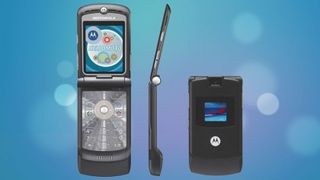
Image credit: Motorola
Motorola is rumored to be rebooting the Razr brand with the Motorola Razr V4, and rather than an old-fashioned clamshell design, it will apparently fold.
Patents have shown how it might look, which is to say, basically like you’d expect a modern take on the Razr to, with a flexible screen rather than a hinge.
The handset was rumored to be landing sometime in February, but that didn’t happen.
However, during a press briefing at MWC, Motorola’s vice president and general manager Anthony Barounas, said: “If you go around the stores today, for me the phones all look the same. It’s difficult to see if it’s a Motorola, or [another brand]. How we differentiate to the consumer, show them something really different, that’s where foldables comes in.
“And that’s where Motorola also has a very big investment. I can’t say much but we have one franchise that will have a very big impact there.” So that’s close to a confirmation that something foldable is coming at some point, and the latest leak suggests it might land by December 2019.
However, like most foldable phones it will probably be expensive, with a rumored starting price of roughly $1,500 (around £1,170, AU$2,010).
While that’s expensive it significantly undercuts some others, and we might know the reason for that, as according to one report it has a mid-range Snapdragon 710 chipset (along with 6GB of RAM and either 64GB or 128GB of storage).
Microsoft Surface Duo
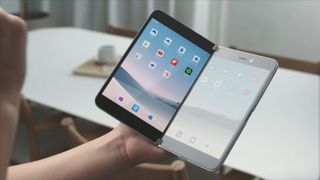
(Image credit: Microsoft)
We’ve been waiting for a Surface Phone from Microsoft for years, and then it went and announced the Surface Duo, a Surface phone that folds.
Well, we’re going to have to qualify a lot of that sentence. It’s a Surface device, but Microsoft has made sure not to call it a phone. It’s used vague language, but we know the device runs on an Android operating system, can make calls, and certainly looks like a phone.
Secondly, calling the Microsoft Surface Duo a foldable device fails to convey the true nature of it – it’s a dual-screen device that can flip up to 360 degrees, with different or the same apps running at the same time. So it literally folds in half (or closes), but it’s not got a screen that moves, rather it just looks like it does.
Microsoft has confirmed the Surface Duo will be available at the end of 2020, which is certainly a long way off when you consider the device launched in October 2019, but that’s the price of perfection, we suppose.
Potentially the device will change a lot in the year between its launch and release, so when it comes out it may no longer have the Snapdragon 855 processor, dual 5.6-inch displays, or cameras, but those were all present in the device we saw.
LG
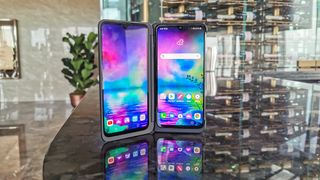
(Image credit: TechRadar)
The latest news on a foldable LG phone comes from Kyle Yoon, senior product manager for LG Mobile, who, during a briefing, said:
“When it comes to foldable, [the day will come] when we’ll all have a foldable device. That’s only if the Play Store has [apps in] a native resolution in those ratios, if the price of foldables will come down – we want to deliver a device more people can use that’s affordable and [offers] more content with 5G. We’re focused on that first but foldables… yes, we will have those devices.”
Prior to that, we’d heard rumors that LG has a foldable phone in the works, and that’s on top of the company having mentioned “smartphones featuring different form factors” in a recent set of financial results, and having patented a foldable phone concept.
The company has also made a foldable TV already, so it seemingly has the expertise. In short then, while nothing is yet confirmed it seems like the question of a foldable LG phone is ‘when’ not ‘if’. Though the company doesn’t seem in any hurry to launch one.
In the meantime, it has launched the LG DualScreen, which is a device that can clip on to the LG G8X ThinQ or LG V50 ThinQ to add a second screen. This is far from a true foldable phone, but it’s better than nothing.
TCL

Image Credit: TechRadar
TCL might not be a name you’d expect to be among the first to launch a foldable phone and, well, you’d be right, because it’s probably not going to sell a foldable handset under any of its brands (which include BlackBerry and Alcatel) until next year.
But the company has shown off a foldable concept device at MWC. This has a 7.2-inch 2048 x 1536 AMOLED display and four rear cameras, but we’re not convinced the final foldable will have those specs, as one of the key features appears to be a relatively affordable price.
The company didn’t get into specifics, but for it to substantially undercut the likes of the Galaxy Fold and Mate X, we’d expect worse specs than that.
Apple
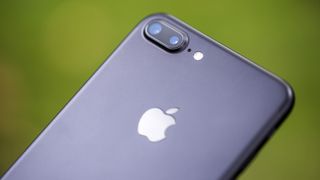
Image credit: TechRadar
While not likely to arrive as imminently as some on this list, Apple could well have a foldable phone of its own in the works.
Rumors of one first emerged in late 2017, with the claim that it would launch in 2020. We’ve also seen Apple patents for a folding screen more than once, so Apple is clearly at least exploring the idea.
If folding phones prove practical then we’d expect Apple will get involved eventually, but the company usually waits for tech to be polished rather than aiming to be first, so we might not see one for a while.
Sony
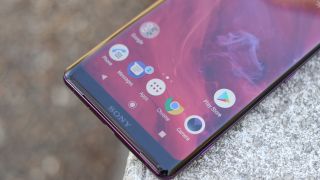
Image credit: TechRadar
As with Apple, Sony also looks to be working on – or at least toying with – a foldable phone.
Evidence for this comes from a Sony patent, detailing both foldable and rollable smartphones. Of course, patents don’t always become products, but with much of the rest of the industry looking in this direction it would be no surprise if Sony is too.
However, we wouldn’t expect one imminently, as the company announced a bunch of new phones at MWC 2019, where we saw many other foldables, and a folding handset wasn’t among them. Instead, it seems focused on 21:9 screens, as seen on the likes of the Sony Xperia 1.
Royole FlexPai
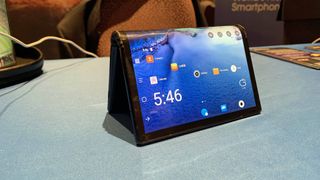
Image credit: TechRadar
The first foldable phone to be released was actually the Royole FlexPai.
Currently you can only buy it in China (unless you’re happy with a developer version), and it’s not cheap at $1,300 (around £1,000 / AU$1,825).
You might want to hold off on that import too, as in our hands-on review we found that it was both very slow and had a very slow camera. In short, it seems like little more than a proof-of-concept.
Xiaomi
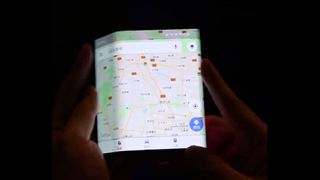
Image credit: Xiaomi
(Image credit: Xiaomi)
A Xiaomi folding phone has been teased in several brief videos. They show a device with two folding hinges, rather than a single central fold.
Don’t get too excited just yet though, as this is little more than a concept device for now.
As while Lin Bin, the co-founder of Xiaomi, has posted on social media that the “Xiaomi double folding mobile phone is coming,” he also said “if you like it, we will consider making a mass production machine in the future.”
Xiaomi was at MWC 2019, showing off devices such as the Xiaomi Mi 9, but its folding phone was nowhere to be seen.
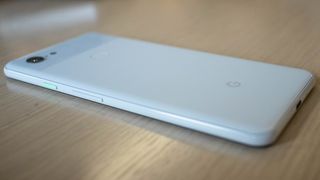
Image credit: TechRadar
Google has confirmed it is experimenting with foldable phones too. The company has also patented several foldable designs, which we’ve seen in leaks.
These are likely a long way off being finished products, but show for example a screen that would fold down on itself when not in use, and a phone with three folds, which allows the screens to stack on top of each other when folded.
Mario Queiroz, Google’s head of Pixel development, told CNET, “We’re definitely prototyping the technology. We’ve been doing it for a long time. I don’t think there’s a clear use case yet.”
Oppo
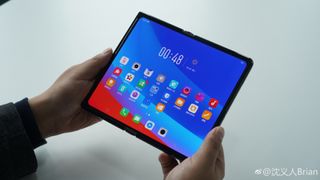
Image credit: Brian Shen
Oppo has shown off a foldable concept device that looks a lot like the Huawei Mate X, as you can see in the image above.
However, we don’t know anything about the specs yet and you probably won’t be able to buy this any time soon if at all, as the company has said it will wait and see whether consumers take to foldable phones before mass producing one.
It did seem to have a 3.5mm headphone jack and pop-up camera, which is rather surprising given that mechanical parts pose a big potential for breaking, and a folding phone is delicate enough anyway, without the extra motion.
ZTE Nubia Alpha

Image credit: TechRadar
ZTE isn’t being left out of the folding action either, as the firm has launched the Nubia Alpha, a phone with a 4-inch foldable screen that you can wrap around your wrist.
The phone is available in many areas, and costs $449 (roughly £340, AU$640). For some reason Nubia shows its price in dollars even when you’re not in the UK.
Additionally, ZTE has patented another foldable device, this time with a more conventional clamshell design, so if you don’t want to wear your phone then ZTE may have a more suitable option for you sooner or later.
Energizer Power Max 8100S
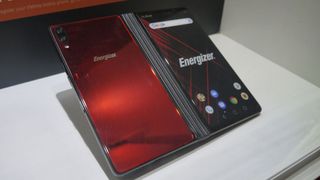
Image Credit: TechRadar
Energizer is not a company we’d have expected to be among the first to launch a foldable phone, but it is, at least in prototype form.
Shown off behind glass at MWC 2019, the Energizer Power Max 8100S has a smartphone-sized screen when folded and a tablet-sized one when unfolded.
Folds aside, the highlight of this phone is likely its 10,000mAh battery, but it also has a 48MP main camera, a 12MP secondary lens and a 24MP selfie camera, plus a Snapdragon 855 chipset and 8GB of RAM. However, it’s not currently clear if or when you’ll be able to buy it.
Vivo iQOO
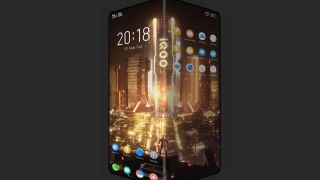
(Image credit: 女王议科技)
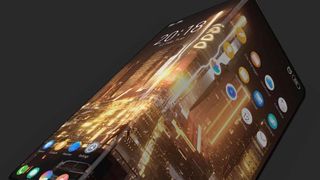
(Image credit: 女王议科技)

(Image credit: 女王议科技)
Vivo has launched its own sub-brand, iQOO, in order to hit the foldable phone market. It’s early days for the device, with the only hint of its existence being several renders leaked online, but that’s a lot more than some other foldables.
One edge the iQOO foldable phone has, if the leak is to believed, is that it will launch at around CNY7,000, or roughly $1,000, £800, AU$1,450. If this is correct – which is a big if, of course – it will be a lot cheaper than the prices of most other similar devices.
Be the first to comment